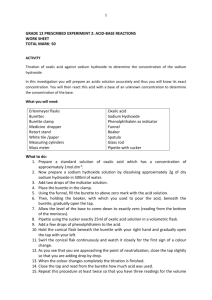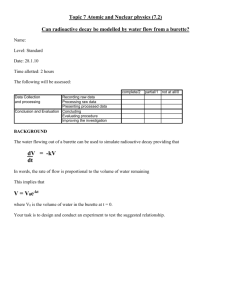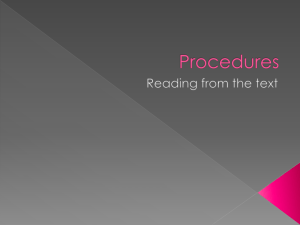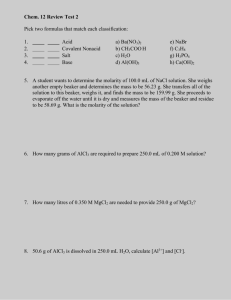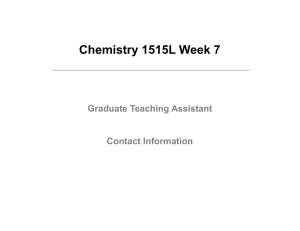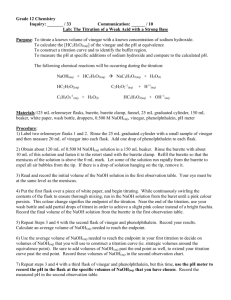Titration of Oxalic Acid vs. NaOH: Grade 12 Practical
advertisement
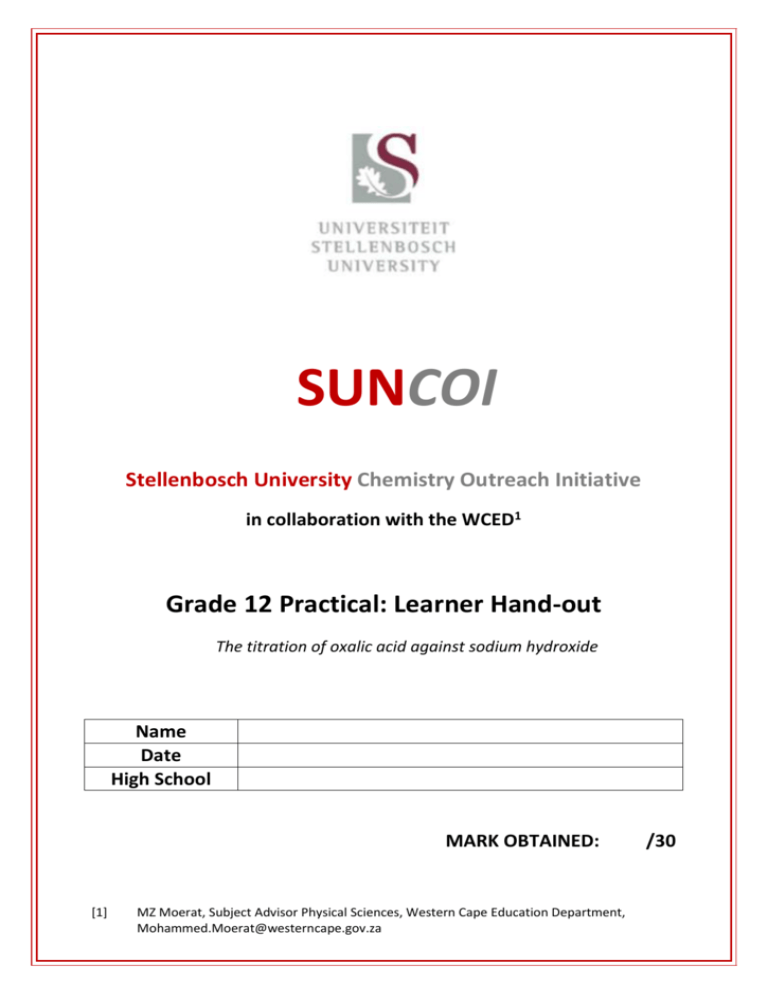
SUNCOI Stellenbosch University Chemistry Outreach Initiative in collaboration with the WCED1 Grade 12 Practical: Learner Hand-out The titration of oxalic acid against sodium hydroxide Name Date High School MARK OBTAINED: [1] MZ Moerat, Subject Advisor Physical Sciences, Western Cape Education Department, Mohammed.Moerat@westerncape.gov.za /30 Titration of oxalic acid against sodium hydroxide. SAFETY: 1. Oxalic acid is corrosive. It can be fatal if swallowed. 2. Sodium hydroxide is poisonous, harmful if inhaled, burns the skin and it may be fatal if swallowed. 3. All chemicals are hazardous. Please consult your laboratory manual for more information about why oxalic acid, sodium hydroxide and sulphuric acid are hazardous. 4. Wear safety goggles and gloves when handling chemicals. Formal experiment 1: Titration Aim Determine the concentration of a given sodium hydroxide solution of unknown concentration by titration against a standard solution of Oxalic acid. Apparatus You will need the following items for this experiment: 0,1 mol.dm-3 Oxalic acid (standard solution) NaOH solution (unknown concentration) Phenolphthalein indicator Distilled water Pipette of volume 25 ml Beakers, volume 250 ml and 100 ml Balance Spatula Erlenmeyer flask, volume 250 ml Volumetric measuring flask, volume 100 ml Piece of paper Retort stand with base, retort clamp Burette, volume 50 ml Wash bottle Dropper 2 Method 1) Pipette 25ml of the standard acid solution into an Erlenmeyer flask and add 3 drops of phenolphthalein indicator. 2) Rinse your burette once with distilled water and then with small (5-10 ml) portions of the NaOH solution you have prepared, draining off the solution through the burette tip. 3) Check if your burette drains properly, no air bubbles are trapped in the tip and no leaks are apparent. 4) Fill the burette to the zero mark with the NaOH solution and make sure that the burette tip is full of solution. With a piece of paper towel, remove any drop of NaOH hanging from the tip. 5) Make a preliminary titration to learn approximately how the titration proceeds. Place a piece of white paper under the flask so that the colour of the solution is easily observed. Swirl the flask and add the NaOH solution. Occasionally rinse down the walls of the flask with distilled water from your wash bottle. Titrate until the last drop of NaOH solution leaves a permanent pink colour in the solution. Read and record the position on the burette of the lowest point of the meniscus of the NaOH solution. 6) Now titrate at least three more samples of standard acid, being certain that the burette is refilled to the zero mark with NaOH solution and that you use a clean flask. 7) In this and subsequent runs you may add NaOH solution from the burette very rapidly up to about 2 ml of the volume you estimate on the basis of your first titration. Then carefully add the rest of the base drop by drop so that you can determine the endpoint accurately. 8) Record the results in a table. Decide which values are accurate and calculate the average volume of NaOH used. Use the mole ratio in the balanced equation to calculate the concentration of the unknown sodium hydroxide solution. 3 Write-up: Use the attached Marking Memorandum as a guideline to do your write-up: Planning: [6 Marks] (a) Draw a labelled diagram of how you will set up your apparatus; (3) (b) Describe how you will collect, record and evaluate your data: (3) 4 Results: [24 Marks] (a) (b) Summarise your results in an appropriate table: Write a balanced equation for the reaction and calculate the unknown concentration of the base (NaOH): 5


